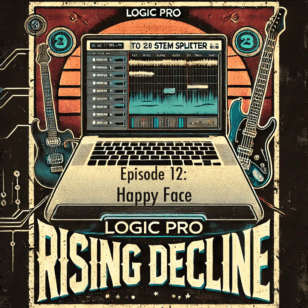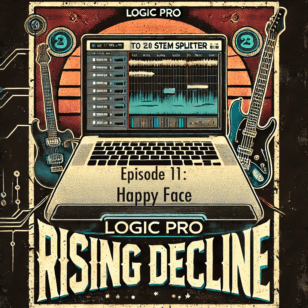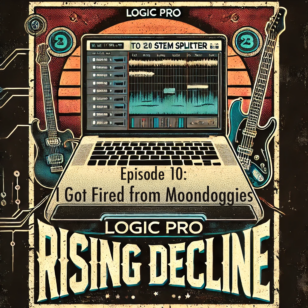ISTE20 Live will be my ninth Annual ISTE Conference, and it promises to be unlike any Annual ISTE Conference thus far. So while I plan out how to successfully attend this conference and continue to work on building my own presentations, it feels like an appropriate moment in time to look back at my last eight ISTE Conferences, and see how they’ve shaped me as an educator. So whether you’re a first-time attendee or we met in person eight years ago, sit back and hear some of my highlights of what I’ve learned, and what you might learn at ISTE20 Live.
ISTE12
Have a plan. Be open to changing it.
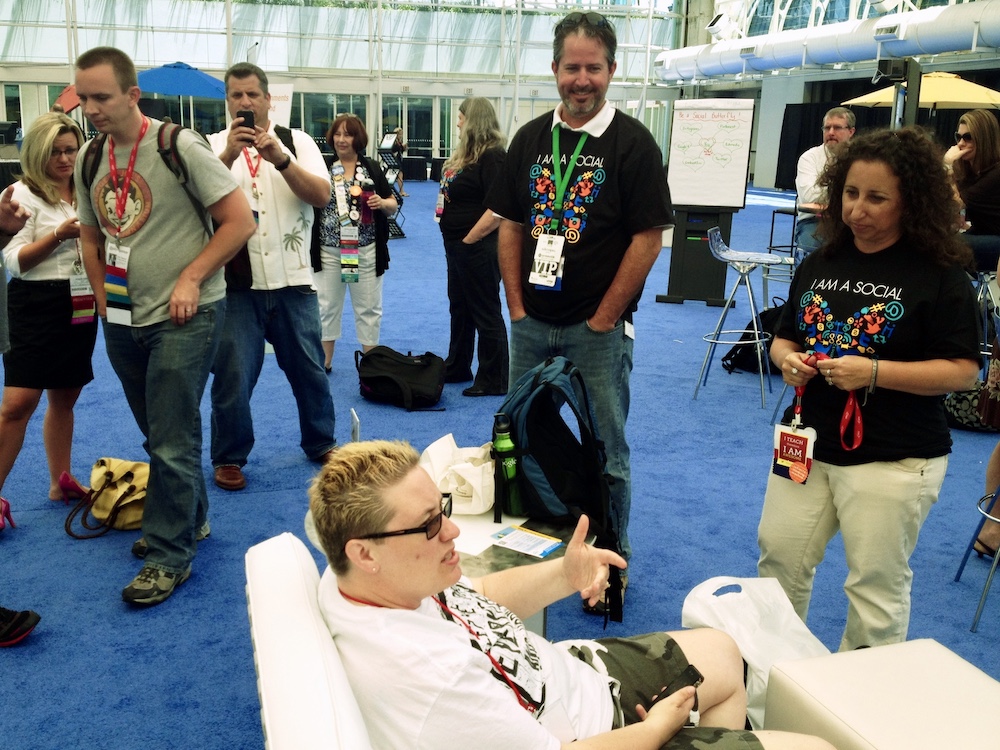
My first ISTE Conference was ISTE 12 in San Diego, CA. This was right when Twitter was being used by educators to find each other and share ideas. This was also back when ISTE had the Social Butterfly Lounge, which I proudly coordinated.
I was determined to make the most of this conference. After all, most of my favorite educators from around the world would be at this conference. So, I booked every minute of my time in San Diego and had the perfect plan.
Narrator: But he did not have the perfect plan.
I learned pretty quickly that 1,800,000 square feet of conference center is a lot. I also learned pretty quickly that I knew a lot of people at this conference. So, while my plan was to go to three sessions before lunch every day, I ended up doing something more like this: walk to my first session, run into someone I know (but haven’t met in person yet because this was my first ISTE Conference), stop and talk to them for ten minutes, keep walking, run into another person, stop and talk to them for fifteen minutes, realize I’m walking the wrong way, run into someone else I know and convince them to go to a session with me. This happened the entire time, and it ended up being the perfect conference experience. This was when I developed my trick for navigating conferences: be okay with seeing part of a session, and take time to talk with amazing people.
ISTE 13
Share student work publicly whenever possible.
San Diego was the perfect location for me as an early career teacher. Aside from the (obviously) perfect weather, it was only a two hour drive south for me, making the conference more affordable and convenient. ISTE13 was in San Antonio, TX, which is more than two hours away from Los Angeles. My district wouldn’t send me, so I had to find a creative way to fund my trip.

Enter the ISTE Awards. I applied for the Outstanding Young Educator Award, mostly because the prize was free registration and a stipend that would cover airfare. I was under 35 years of age, and I was writing songs and making videos with my 4th and 5th grade music students and publishing them as a podcast. I met both requirements for this award. And, it turns out, I won ISTE Emerging Leader! Along with being a huge honor, it also came with a stipend, and that meant I could attend the conference! If you haven’t applied for an ISTE Award, consider doing so. If you’ve never nominated a friend or colleague, please do it. This award both allowed me to attend, and gave me the encouragement to continue pushing what was possible with technology in my classroom.
Among so many moments and photos, we need to take just a moment to acknowledge Google Glass. Remember how everyone went insane trying to buy one, or wear one, or even see one in real life? Here is your moment of Google Glass, hosted by the owner Adam Bellow.
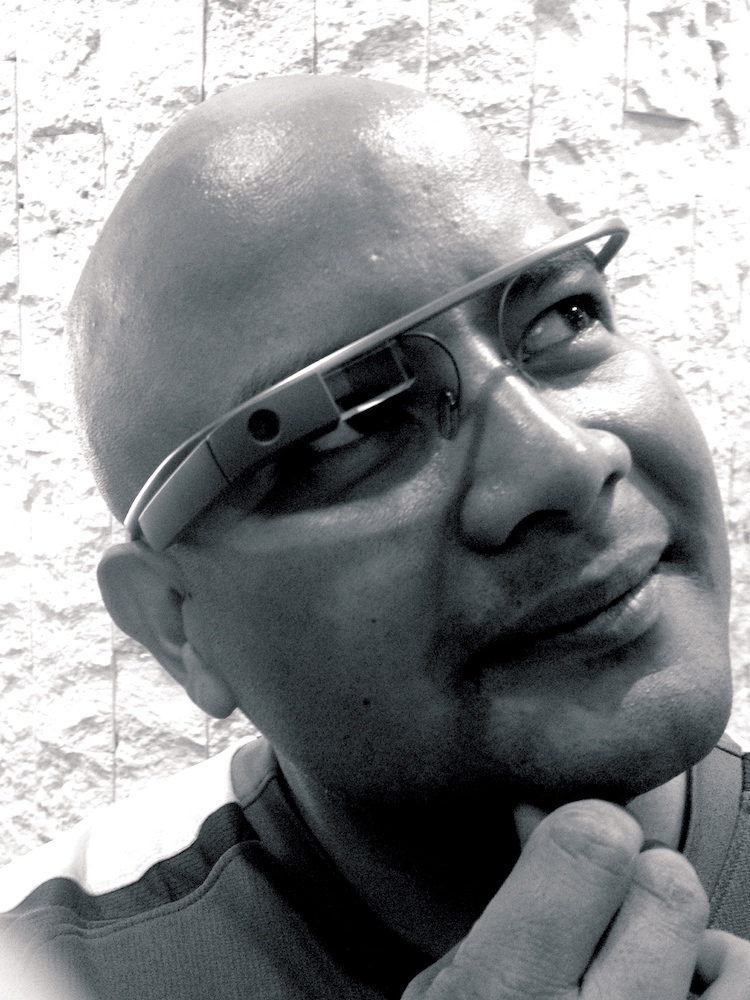
JR Ginex-Orinion poses with Google Glass 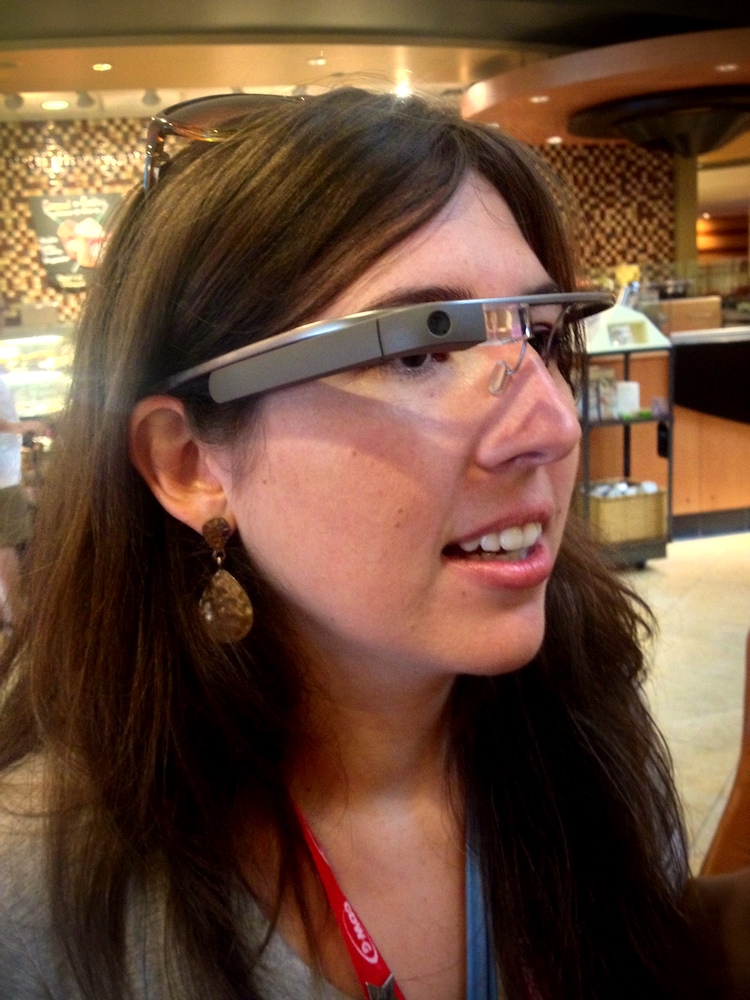
Dr. Ashley Cross tried on Google Glass 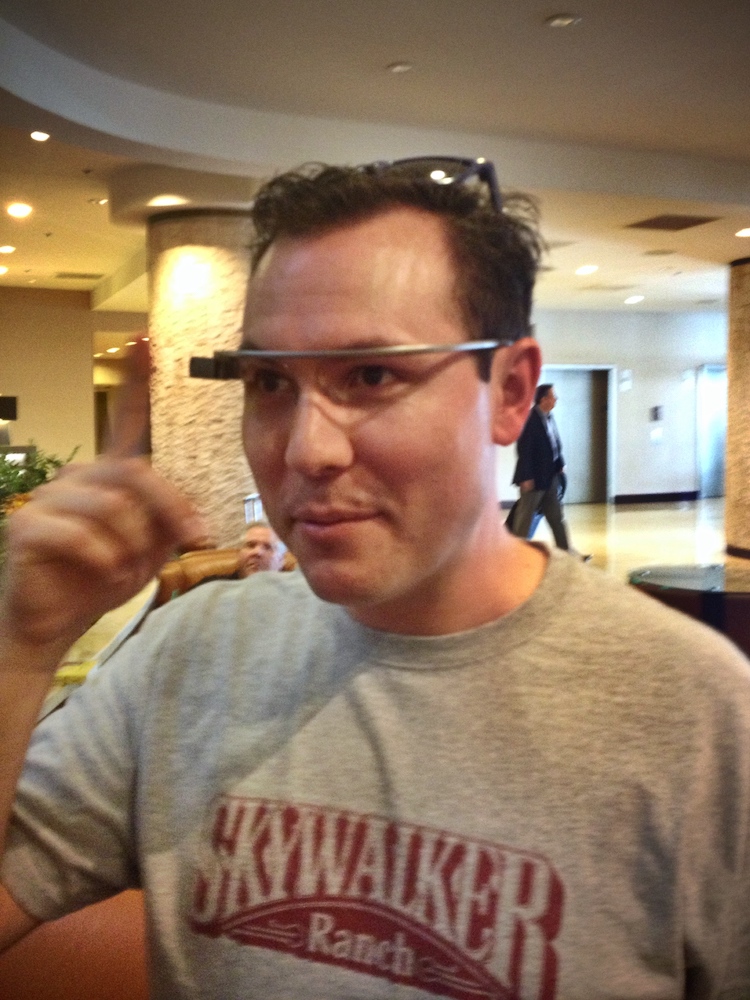
Bill Selak taps Google Glass and says something hilarious 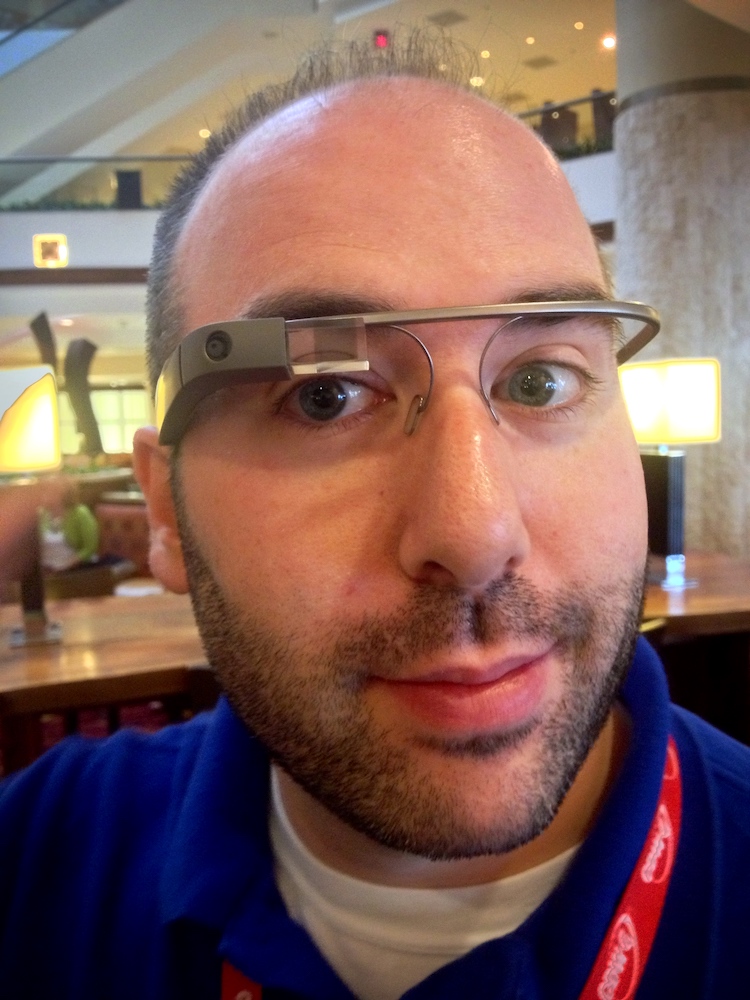
Adam Bellow, owner of Google Glass, shares (and plays well with others)
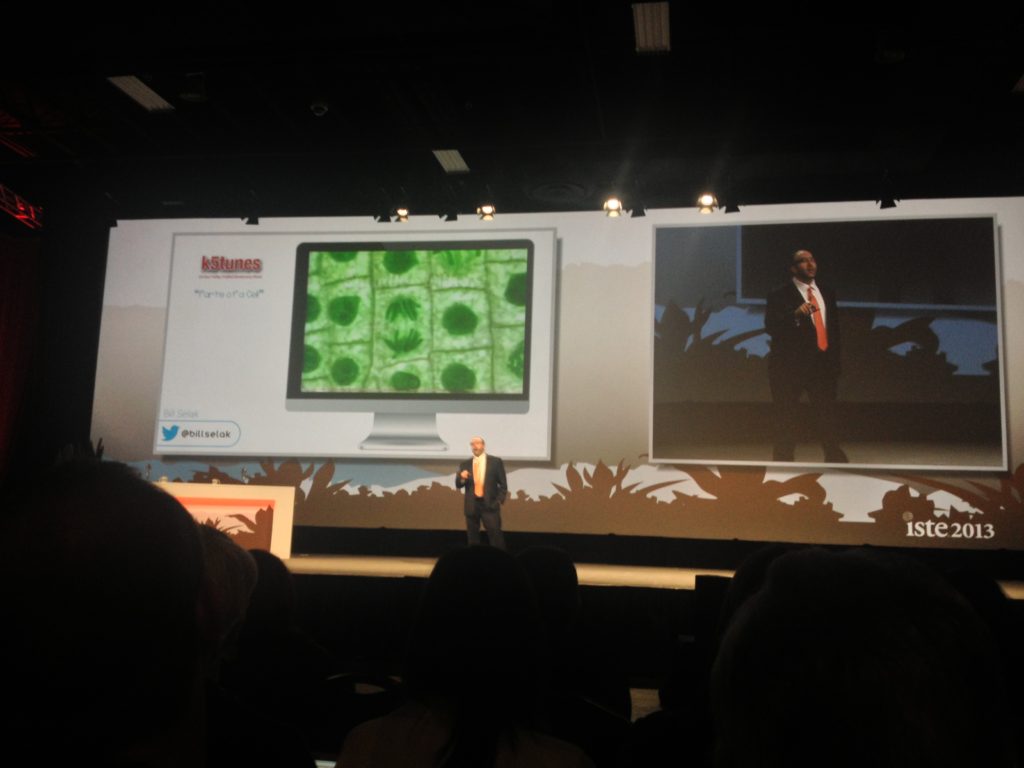
The absolute highlight of ISTE13 was hearing Adam Bellow give the closing keynote. I knew Adam a bit–we chatted on Twitter and met the day before during the Google Glass share. I was so excited to hear an educator I knew on stage in front of 10,000 of our closest friends.
And then, about halfway through his keynote, I heard a song that I wrote with my fifth graders. And 10,000 other people heard that song, too. I believe my response can only be expressed in emoji: 🤯
In was in this moment I realized just how powerful social media can be. As a teacher, I would regularly share projects my students were making. And I would remind them that by posting it–to Twitter, my blog, or my podcast–that the world can hear it. In reality, I would guess that very few of the 8 billion humans read my blog post, or listened to 4th graders play clarinet. But, in that moment in that massive room in San Antonio, thousands of educators heard my students sing, and heard the music my students wrote. It was a powerful reminder of how good news can spread, and how student voice can transform education.
ISTE 14
Spend time with amazing educators.
At ISTE14, I spent a lot of time doing two things: presenting and hanging out with extraordinary educators. I presented six times at this conference! That meant that most of time at the conference was spent in sessions… but in sessions as a presenter. I was one week away from starting my new job as Director of Technology at Hillbrook School, and I was desperate to connect with other tech directors and develop skills for new role. But I didn’t have time during the day (ie during the conference). By necessity, I booked time to connect with people early in the morning, during dinnertime, and later in the evening. This led to one of the most exhausting, yet memorable events of my life.
I was introduced to Fox Bros. Bar-B-Q on Sunday night. Good food with good people leads to good conversations. In the pre-Lyft era, this restaurant took a while to get to, leading to even more fantastic conversations. I learned a lot about good bbq that night, and (more importantly?) learned a lot about being a better presenter–tips, tricks, strategies, ways to introduce complex topics, and on and on. I am a better presenter because of that night.
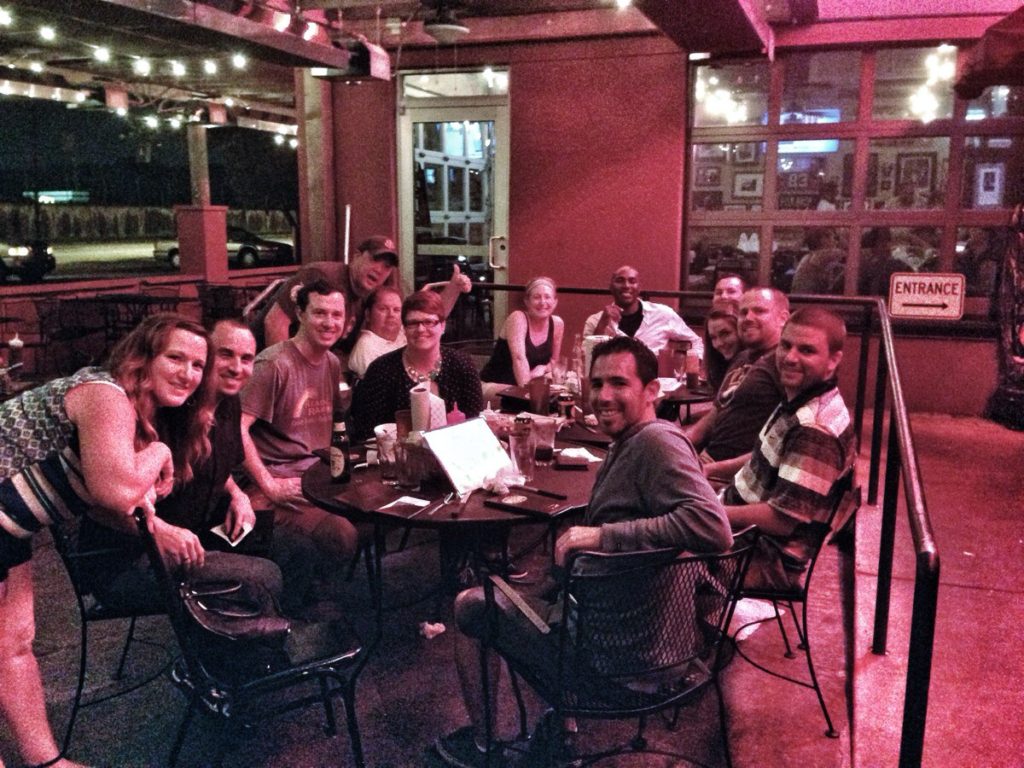
Good people, good food, good conversations 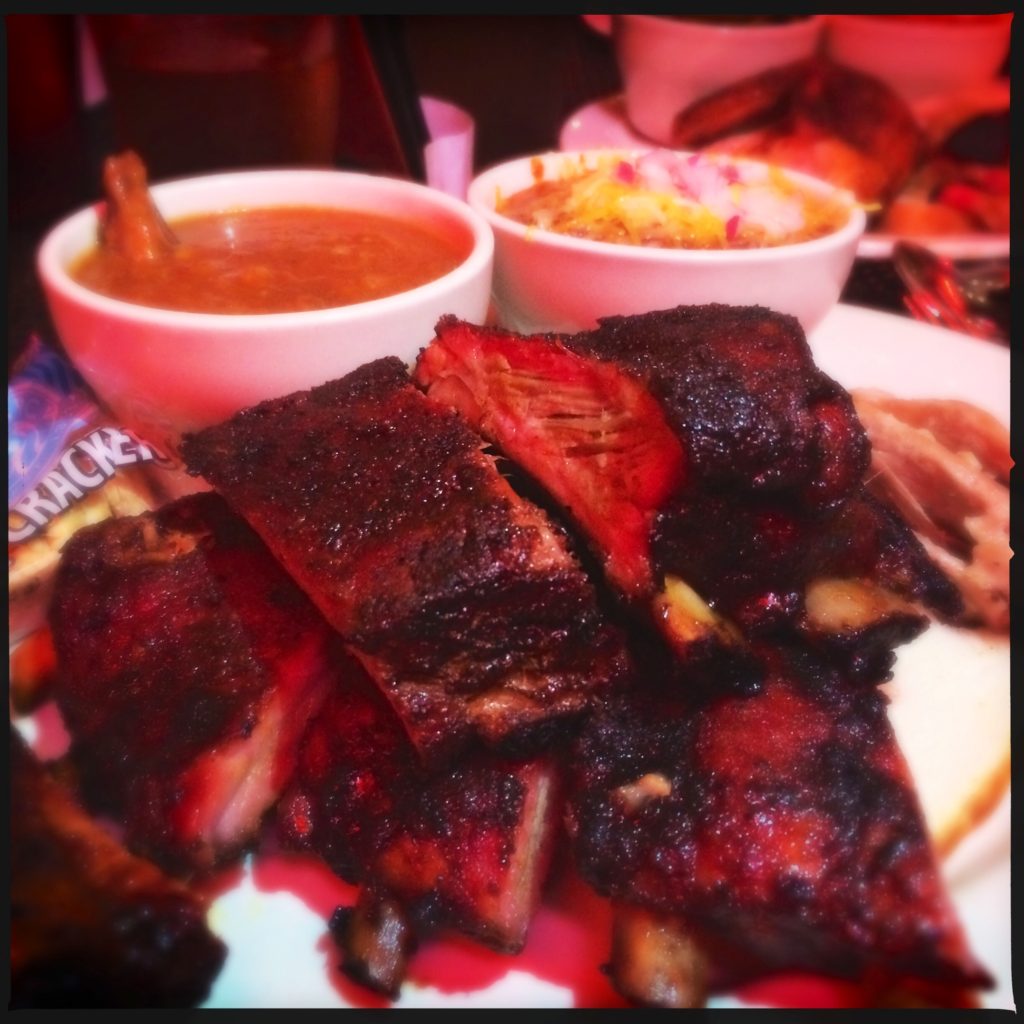
Ribs! #tearsofmeat 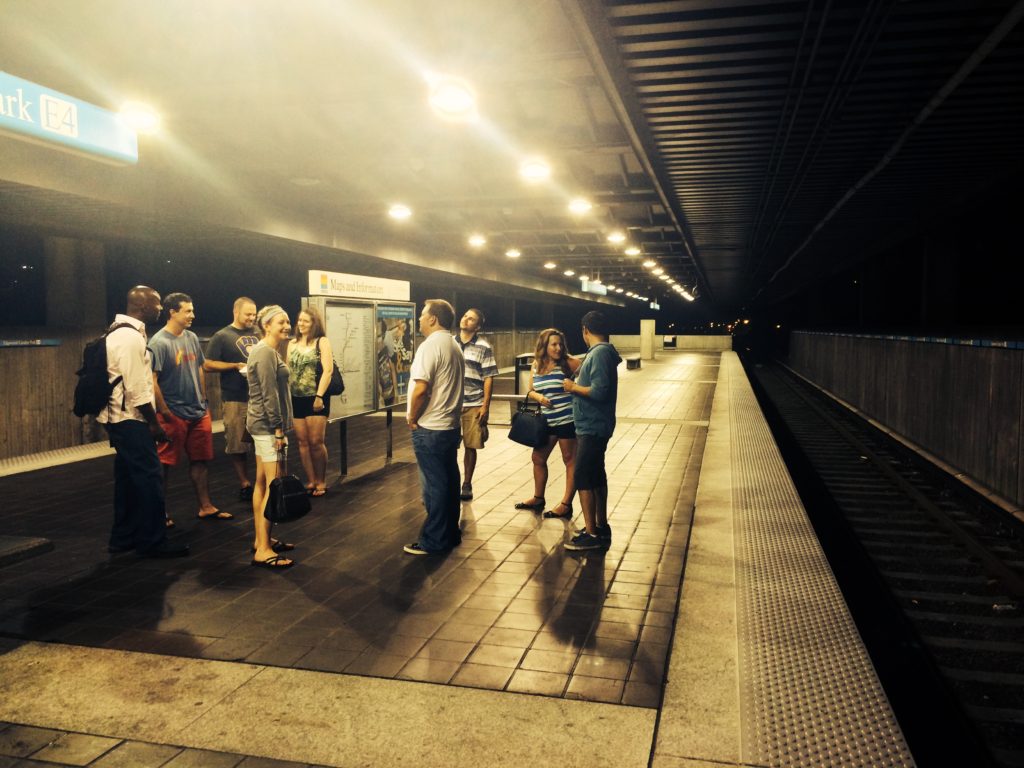
The Hang at a MARTA Station 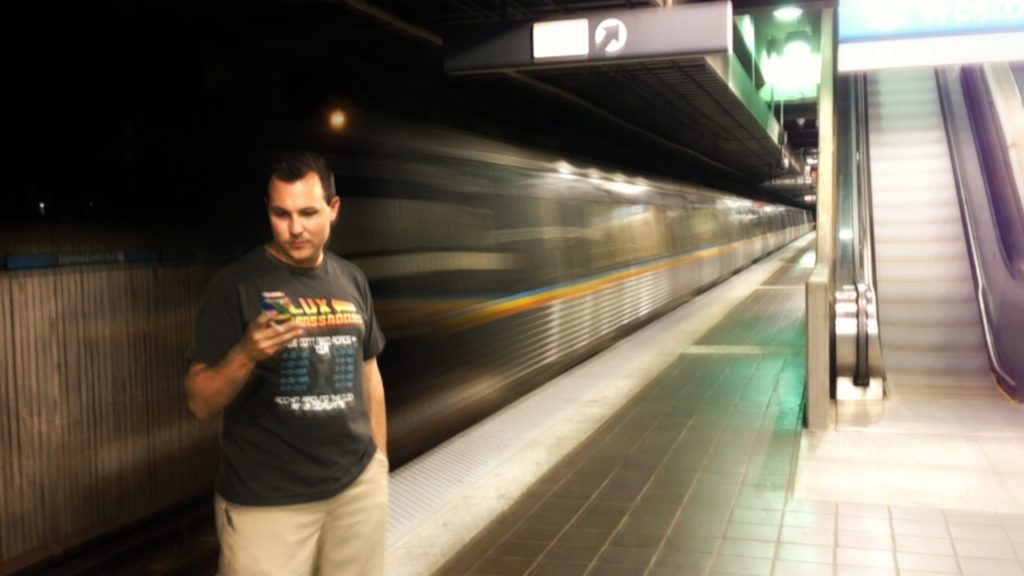
Photo by Ken Shelton. One of my favorite pictures of me.
ISTE 15
Make the thing you want to see in education.
ISTE15 was in Philly. The very first Edcamp was in Philly. Was this going to be an epic conference? Yes, it would be.
Edcamp completely shifted how I viewed both professional learning, and how I viewed my relationship with ISTE… both in very good ways. I’ve podcasted and written about the power of Edcamps a lot, and with good reason. They introduced me to the power of a participant-driven conference–a conference with sessions built the same day as the conference. It was always timely (by design), but was in opposition in a lot of ways to big conferences like… well, like the ISTE Conference. I spent a lot of time at the conference with fellow Edcamp organizers talking about how an unconference might fit into a conference, and discussing how we could take the greatest parts of Edcamps and bring them to our schools and our classrooms. Five years later, I think I finally have my answer: learning should always be participatory. For me, this lesson has shifted how I treat every presentation (at an unconference, conference), how I treat PD with our faculty, and how I plan and teach lessons with students.
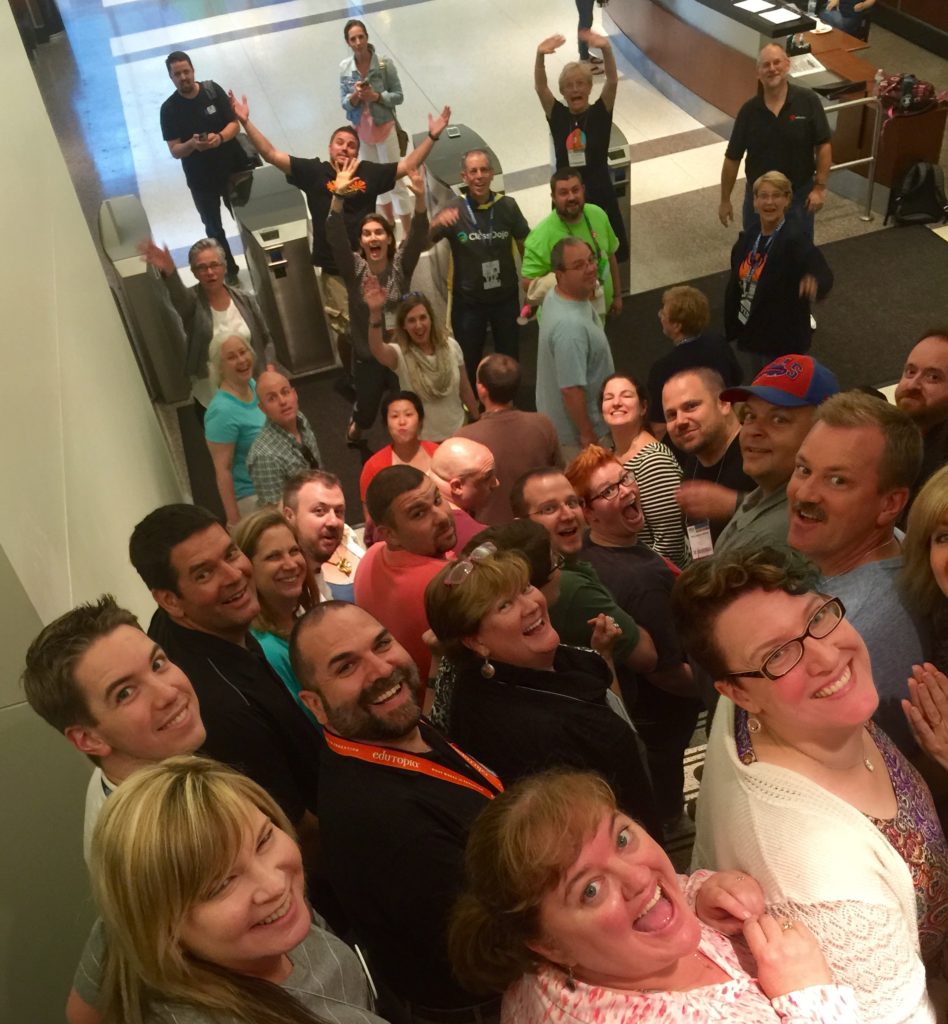
At the Edcamp organizer meetup, three things happened. I had my first cheesesteak, I met educators that have become lifelong friends, and I realized that everyone in that room helped plan an Edcamp. That last point really stuck with me. We all saw a need in our community to empower teacher voice, and we did something about it. We all made a thing. And as an educator, making a thing for other educators is absolutely transformative. In a similar way, the way I looked at ISTE Conferences also shifted. It became less about “they” and more about “we.” I realized the agency I had as a member of this incredible organization. It was then that I took ownership of how I could contribute to the conference and how my presentations and my engagement at the conference could shape it.
ISTE 16
Take a risk.
ISTE Ignite sessions: each presenter is given 20 slides that auto-advance every 20 seconds.
After seeing edtech friends do this high-wire presentation for a couple years, I finally applied to give an ISTE Ignite talk. My talk, I Think I Figured Out How to use Snapchat as an Educator, was accepted, and I realized just how intimidating this style of presentation actually was. My blog post about how to give an Ignite talk goes into detail on this; let me just share here that it is A LOT of work, and requires an insane amount of rehearsal.
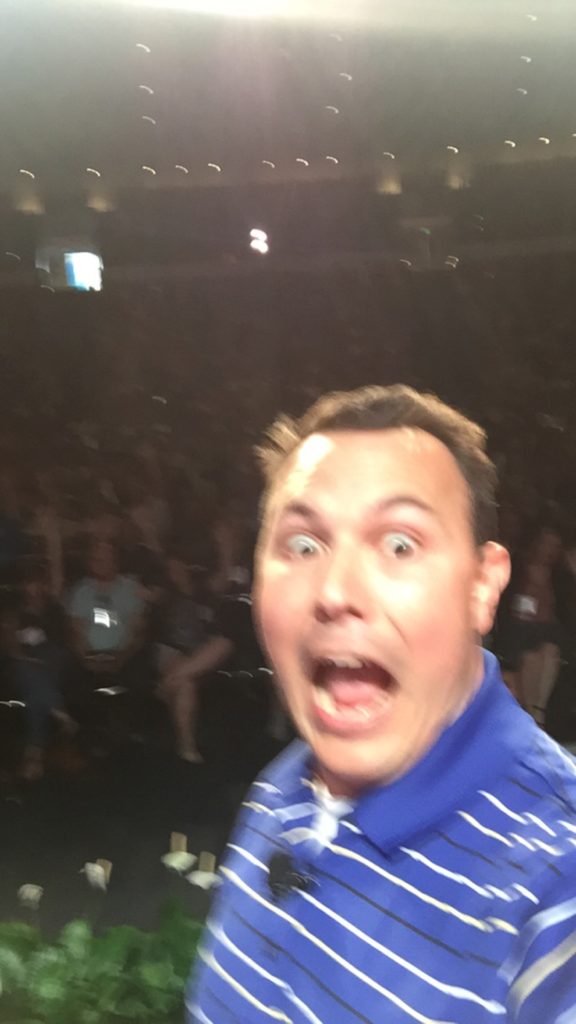
We had a run-through in the main theater/ballroom, where we got to practice the first few slides in the room. In the very, very big room. In what then that we collectively realized what we got ourselves into, and we collectively energized. (Terrified? Terrigized?) I can say that there is nothing like giving a timed talk in front of 1500 of your closest friends. And for me, it was addicting. I fell in love with this high-risk, highly complex way of sharing an idea in a very short time. I am so grateful that I took a risk and submitted to give an Ignite talk. That first Ignite talk taught me the important of continuing to push myself as an educator and always try a newer thing, a harder thing, a more interesting thing.
ISTE 17
Let’s reimagine classrooms. We have the power to do it, so let’s do it.
What if classrooms looked more like studios? What if they were places students wanted to be, where they could find a problem, develop a craft, and reach beyond themselves to make a difference in the world? At ISTE17, I gave my second Ignite talk Studios, Not Classrooms. This was the first big presentation I gave that was really informed by my work at Hillbrook School. At that point, we had spent four years looking deeply at classroom environments (spoiler alert: it’s about way more than just furniture), and how environment shapes behavior. In this Ignite talk, I pushed fellow educators to reimagine what classrooms could be.
Up until this point, most of my presentations were about a tool–a website, an app, a workflow–and how educators could use it to more effectively engage students. This talk was challenging colleagues to think differently about what school fundamentally could be. It was about reimagining the institution of education. It was asking everyone to be Neo from The Matrix and shape their own worlds, ignoring the perceived “rules” of what schools and classrooms should be.
ISTE 18
Connect educators to each other.
ISTE18 started off with the ISTE Mentor program, a half day event when local educators learned about the conference, got a tour, met a mentor (that was me!), and then received complimentary registration to attend the conference. It’s an incredible program!
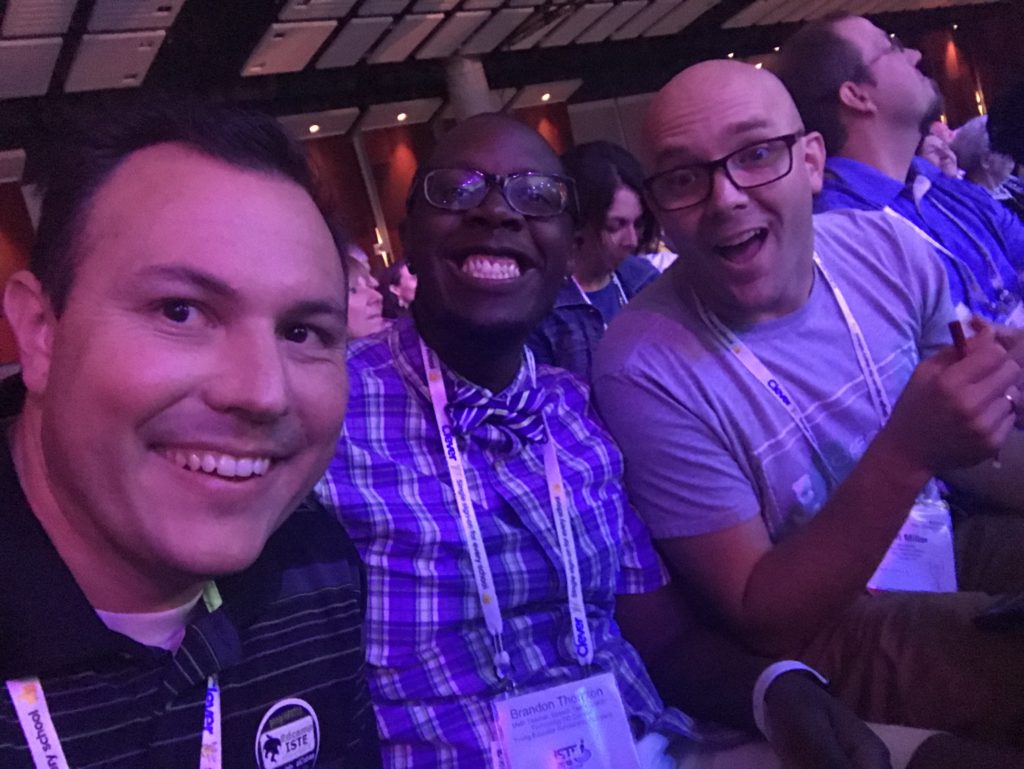
My mentee was Brandon Thornton, a (relatively) young special education teacher in Illinois. We talked about how we could engage in the conference, and talked about his goals for his time at the conference. He mentioned that he really just wanted to see Matt Miller; Matt’s book Ditch That Textbook really pushed Brandon’s thinking, and made him a better teacher. So, I discreetly took out my phone and DM’d Matt. He said he’d love to meet with Brandon.
I orchestrated the meet just before the opening keynote later that day. It was such a simple thing for me to do. It was such a gracious thing for Matt to do. It was an absolute highlight for Brandon. If you can connect people, do it. It makes us all better.
ISTE 19
How might we partner?
Worlds collided at ISTE19. For the most part, I spend time with my ISTE friends at the Annual ISTE Conference, spend time with my CUE friends at CUE Conferences, and spend time with Apple Distinguished Educator friends at ADE events. But here, back in Philly, I saw all the people. It was sort of like seeing your teacher in the grocery store as an elementary-aged student. Not actually crazy, but it feels crazy.
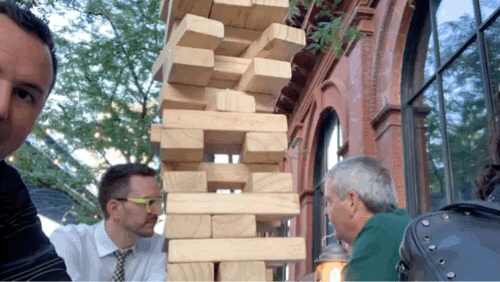
I played Jenga and talked about the future of education at an Apple Distinguished Educator meetup. I knew some of my fellow ADEs, but met so many more. I was beginning to feel like I knew most of the humans that attend ISTE conferences. This was a good reminder that the conference was bigger than I could ever imagine, and that that is an incredibly valuable thing.
I had cheesesteaks (again!) at a CUE meetup. I’m super involved in CUE (ISTE’s California and Nevada affiliate), but tend to think of my CUE friends as people that are in California. (To be fair, they almost always are.) But suddenly, 80 CUE friends were having cheesesteaks together in Philadelphia. We ran a game at this lunch (and later throughout the conference) where we hid a golden egg, and gave prizes to the finders of the egg. It was so simple, yet so fun. And it was happening with my CUE friends at an ISTE Conference.
Clearly, these groups don’t live in vacuum. I knew that. Really. But I had never quite seen how these organizations partnered, how they relied on each other, and how they complimented each other in really cool ways.
ISTE 20 Live
So that brings us to ISTE20 Live. I’m looking forward to seeing how I’ll grow as an educator, and looking forward to seeing what stories I’ll tell eight years from now. I’ll see you there!
